The Marlin 1985 is an upscale, heavy-duty version of their excellent 336 lever rifle. The 336 and its cousins have probably accounted for enough deer over the years to fill a decent-sized football stadium. Reliable, accurate, and affordable, the 336 in caliber .30-30 is a staple in the deer woods each fall. Beef it up, add a stiff 18.5 inch barrel with nice iron sight. Throw in a very-nicely-figured walnut straight-grip stock, and you have the 1895.
This model comes in .45-70 and now more recently .410. If you are looking for a rifle for your fall hunt and want a true thumper, this is your huckleberry.
Pros and Cons
- Heavy-duty construction
- Effective caliber
- Nice walnut stock and butt pad
- Sights
- Ease of handling
- Crossbolt safety’s location (tang preferred)
- 4-round capacity (for the shorter barrel. Longer barrels have more capacity.)
BONUS OFFER: Get your free shooting range targets to print at home!
Get your free targets to print at home!
The lever-action rifle
I have an affinity for lever-action rifles and have reviewed many of them.
They evoke the era of the American pioneers, who settled our nation’s land.
Then, the lever gun was important for self-defense. If a farmer didn’t have a decent rifle, he may not last long. Men and women moved herds of cattle across vast, often hostile, prairie. It was often dangerous and without a Henry or Winchester, they could be defenseless in a crisis.
The lever gun is not an idle curiosity from a bygone era. It is alive and well. Their ease of use and capacity make it a natural for hunters, farmers, and those looking for a fun range gun.
Moreover, cowboy shooting competitions encourage the use of lever action rifles. This is thanks to organizations such as the Single Action Shooting Society (SASS).
I once owned an excellent Winchester 92 (actually made by Winchester). It was well-built and easy-handling. Over the years, I have had many lever action rifles. I have a Henry Big Boy .44 Magnum in my gun safe. We shot it yesterday – my sons had a blast.
You can spend hundreds of dollars on a lever action rifle. You can buy a plain Jane .22 LR at the low end, or an Italian-made replica of the Winchester 1873s and 1892, at the high end.
The Marlin 1895 is in the middle of these two extremes, and it is a doozy.
History of Marlin
You may have heard industry rumblings about Marlin’s acquisition by Ruger in 2020. This happened after Marlin’s parent company (Remington Outdoor Company) declared bankruptcy. This is true.
Ruger will start production of Marlin rifles very soon, if they haven’t already. I for one am glad that Ruger jumped in and rescued the company. If Ruger builds the rifles, they’ll build them right. I can’t think of a better outcome for Marlin in these circumstances.
Marlin was founded in the late 1870s by John Marlin in North Haven, Connecticut. Its business began with making lever-action rifles, shotguns and pump rifles.
At the time, Marlin was the main competitor to Winchester. Their machine gun production helped to supply America and our allies in World War 1. These were the M1895 Colt-Browning machine guns. Later, they added a variant called the ”Marlin Gun” for (what would eventually become) the US Air Force.
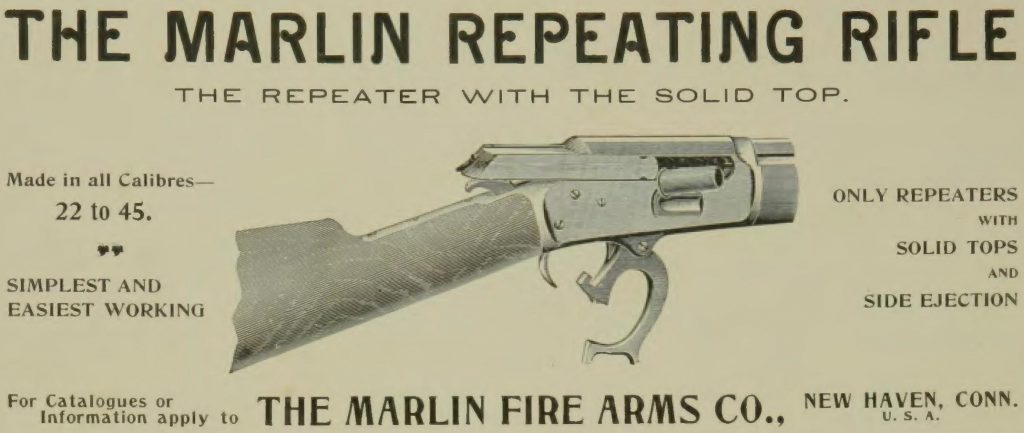
Marlin’s focus became civilian firearms after the war. In 1917, The Hopkins & Allen Arms Company was bought by Marlin for this purpose. By the 1980s, Marlin was producing more rifles than Winchester.
What was Marlin’s advantage over Winchester?
Marlin’s rifles ejected spent bullet cases from the side (the ‘side-ejection system’). This was a big deal because you could mount a scope on a Marlin with no interference. Winchester’s ‘angle-eject system’ wasn’t as popular. As the optics market was then booming, Marlin’s sales grew with it.
Marlin went on to accommodate heavier calibers than Winchester rifles. This Marlin 1895 .45-70 is an example of that.
Add in their handgun caliber rifles (in .357, .41 and .44 Magnums) and you have a large catalogue!
Marlin is at the top end of the five manufacturers of lever action rifles. The other four are Browning, Henry Rifles, Mossberg, and, of course, Winchester.
Popular Articles
Marlin 1895 .45-70 – the ‘Guide Gun’
Our Marlin 1895 Guide Gun 1985 is a variation on a theme by Marlin – their .45-70 line of rifles.
If we count all models of 1895, we come up with eight different .45-70s and two .410 lever-action shotguns. This seems to be a popular gun – Henry makes lever .410s as well.
Barrels range in length from 16.5 to 26 inches – that’s a lot of options for barrel length.
This rifle’s barrel seems to be the ”sweet spot” in terms of length. Our gun is a ”Guide Gun” and as such, has a mid-length barrel at 18.5 inches.
To me, Marlin markets this rifle to those looking for a do-it-all .45-70. One with a barrel length shorter than the 22- and 26-inch models for ease of handling, but not as short as the 16.5-inch tube on their Trapper model.
If you are looking for a .45-70 that will work in most any situation, this Marlin 1895 will suit you.
Let’s take a look at the specs
Marlin 1895 .45-70 Specs
| Model: | 70462, 1895G |
| Overall Length: | 37" |
| Length of Pull: | 13 3/8'' |
| Weight: | 7 pounds |
| Trigger Pull: | 4.0 pounds, measured |
| Barrel: | 18.5", stainless steel, Ballard rifling; 1:20 twist |
| Capacity: | 4-round tubular magazine |
| Sights: | Adjustable semi-buckhorn folding rear sight, ramp front sight with brass bead and hood. Solid-top receiver tapped for scope mount; offset hammer spur (right or left hand) for scope use. |
| Stock: | Walnut, with recoil pad and sling swivels |
| Other Features: | Hammer-block safety; side ejection; loading gate in receiver |
| MSRP: | $1199 (approximate. MSRP not published) |
| "Real-World" Price: | $850-$1200 |
Hands-On


Let’s take a look at our gun in some detail.
As you can most likely tell from the photos, I did not pull this out of a brand-spanking-new factory box. It belongs to a good friend of mine who loaned it to me, along with six cartridges, for this review.
Granted, it isn’t in rough condition but you can tell it’s been shot, this is definitely not a problem with me!
Note the shortened magazine tube limits capacity to four. Longer barrels/magazine tubes can carry more.
When handling, you can tell you have a chunk of steel and walnut in your hands when you pick this baby up. Weighing in right at 7 pounds, this is not a lightweight rifle (but it had better not be a lightweight, more on recoil later).
There’s something about the feel of a walnut stock surrounding polished blue steel. I’m sure there are many of you out there who know what I’m talking about. I own several ”black” rifles but will always have at least one ”brown & blue” shootin’ iron in my safe.
(That role is filled now by my Henry Big Boy .44 – talk about a beautiful gun!).
Here are some more photos…
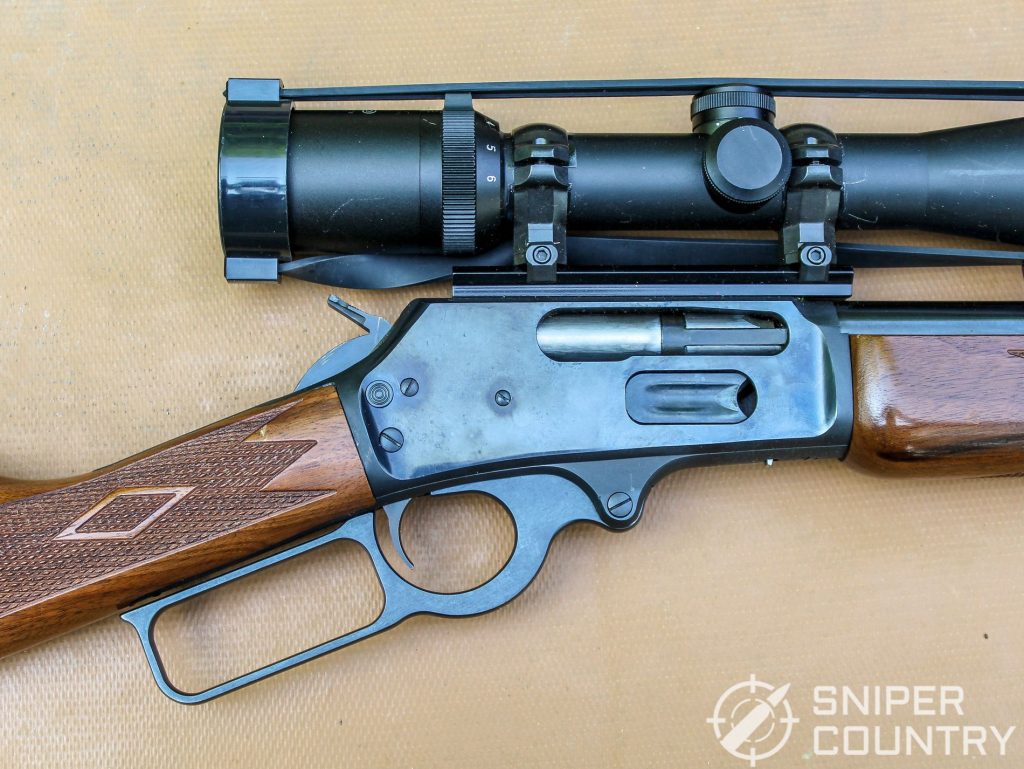
The rifle was loaned to me with this scope mounted. My friend said he hadn’t had a chance to sight it in, so I removed it to use the iron sights. If ammo was not a problem, I would’ve bore-sighted it and let fly until I had it zeroed, but such was not the case.
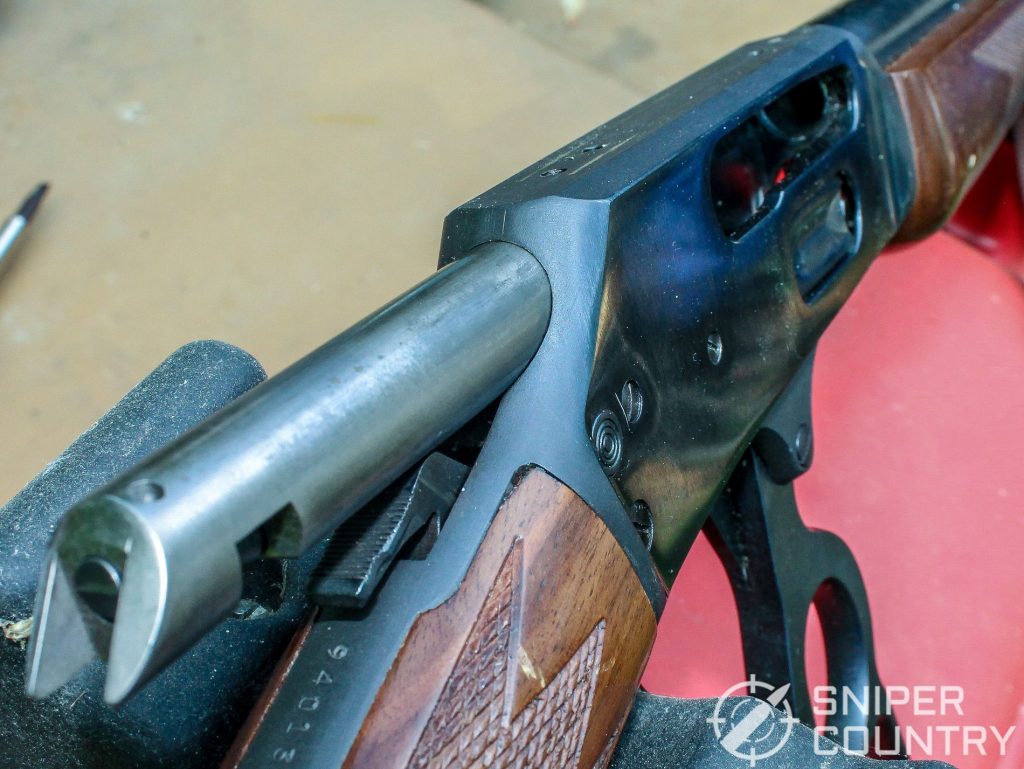
Here’s the action, open. This is one beefy bolt.
BONUS OFFER: Get your free shooting range targets to print at home!
Get your free targets to print at home!
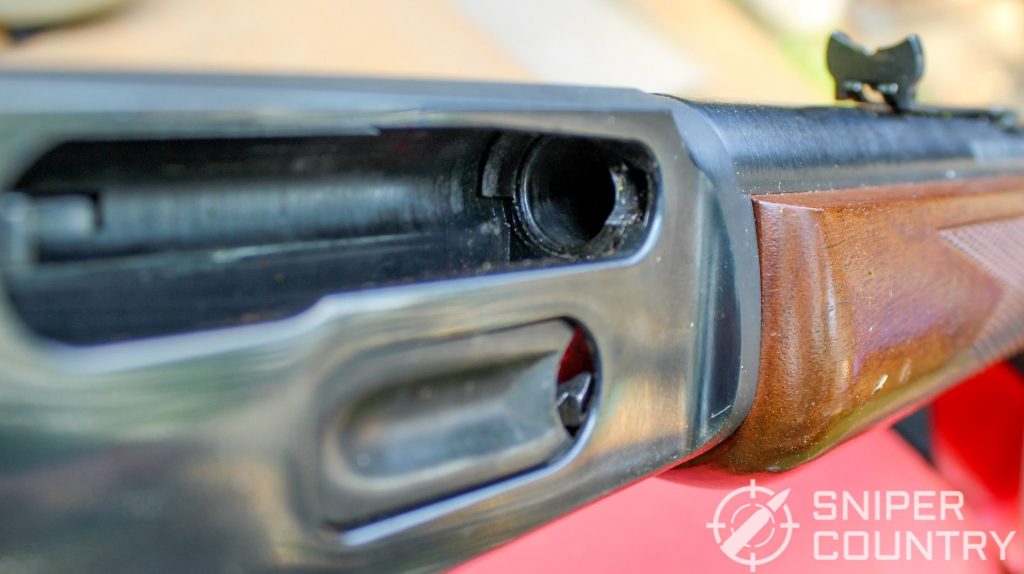
The chamber. Note the huge ejection port. It has to be in order to get those Panatella-sized cases out.
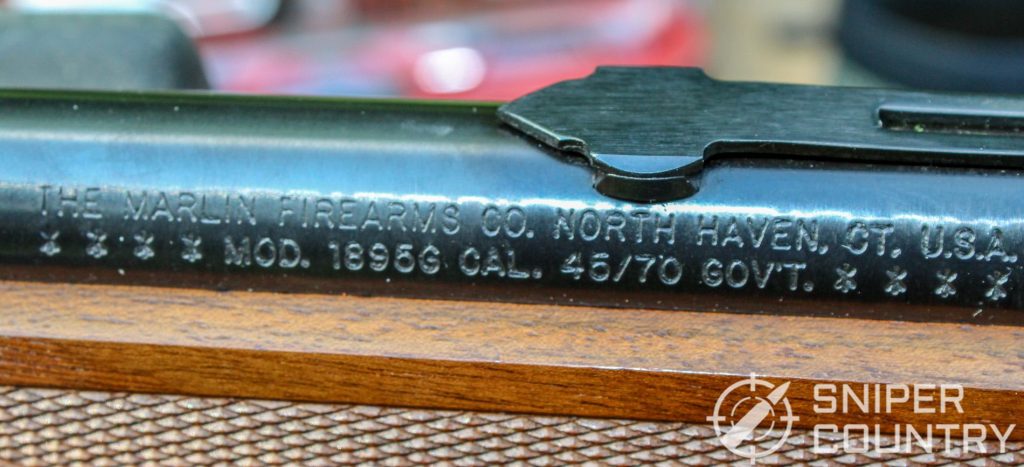
No doubting where the gun came from, or what caliber it is.
In terms of sights, here you go – the rear sight. Notice there is no elevation ladder, which had been removed in order to lay the sight down flat under the scope. I didn’t miss it.
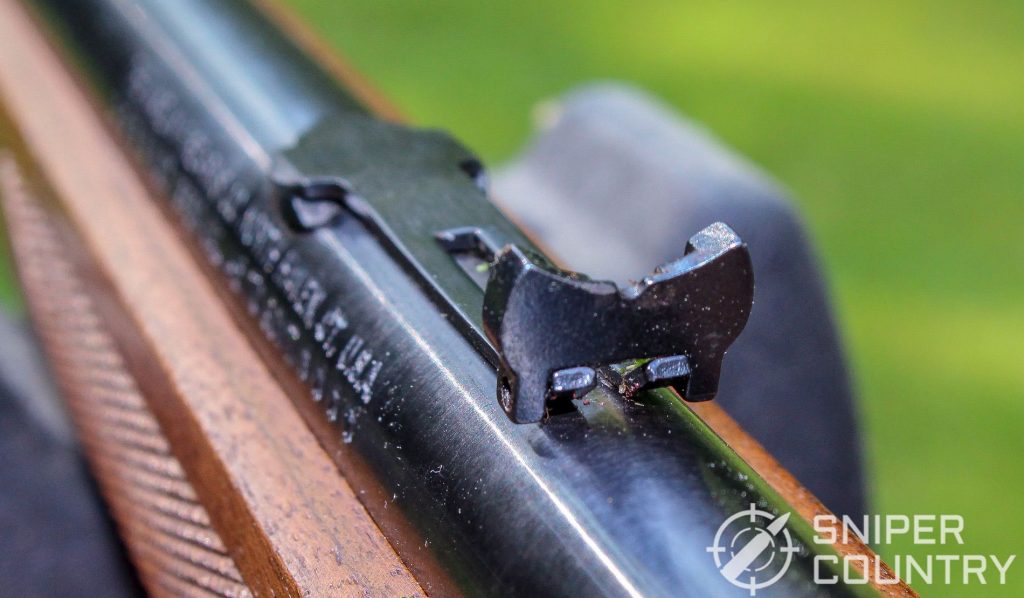
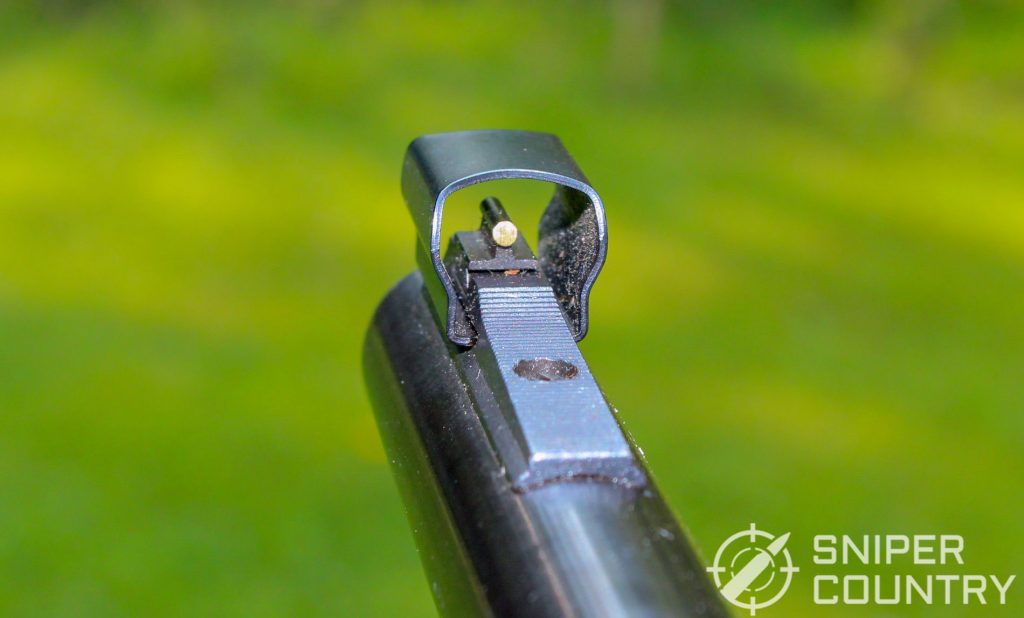
And, the brass-beaded front sight. The hood is removable for sight maintenance or replacement.
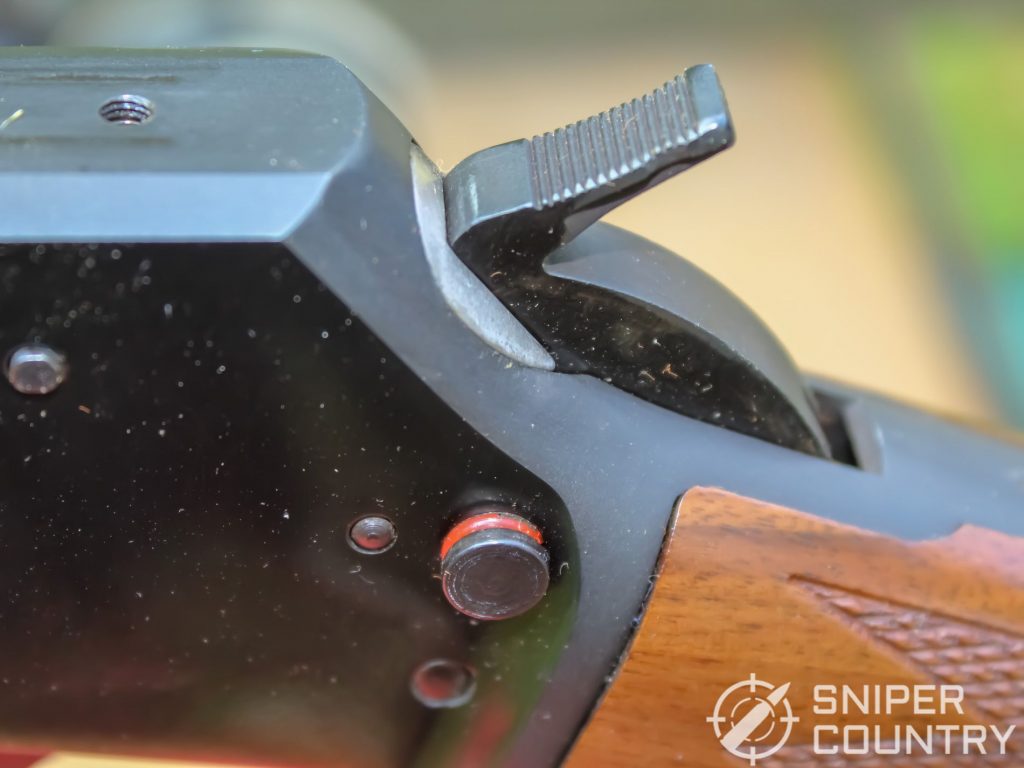
One of the very few things I didn’t like about this rifle – the crossbolt safety. It is a simple hammer block, which means it is high up, under the hammer. I much prefer a tang-mounted safety, such as the Mossberg 464 SPX uses. I liked that safety – it fell under my thumb (or either thumb, so lefties like me are in luck). Here it is:
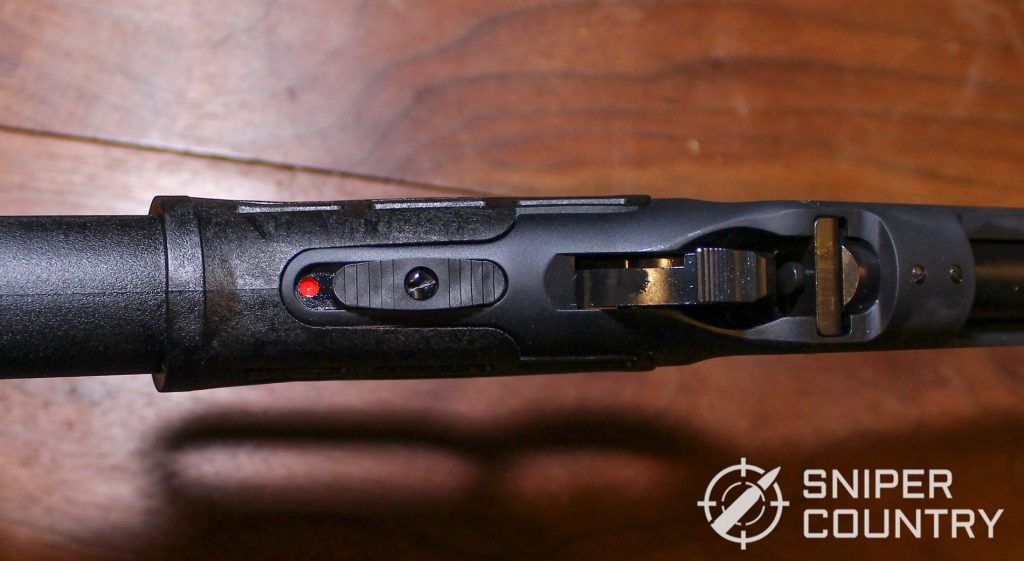
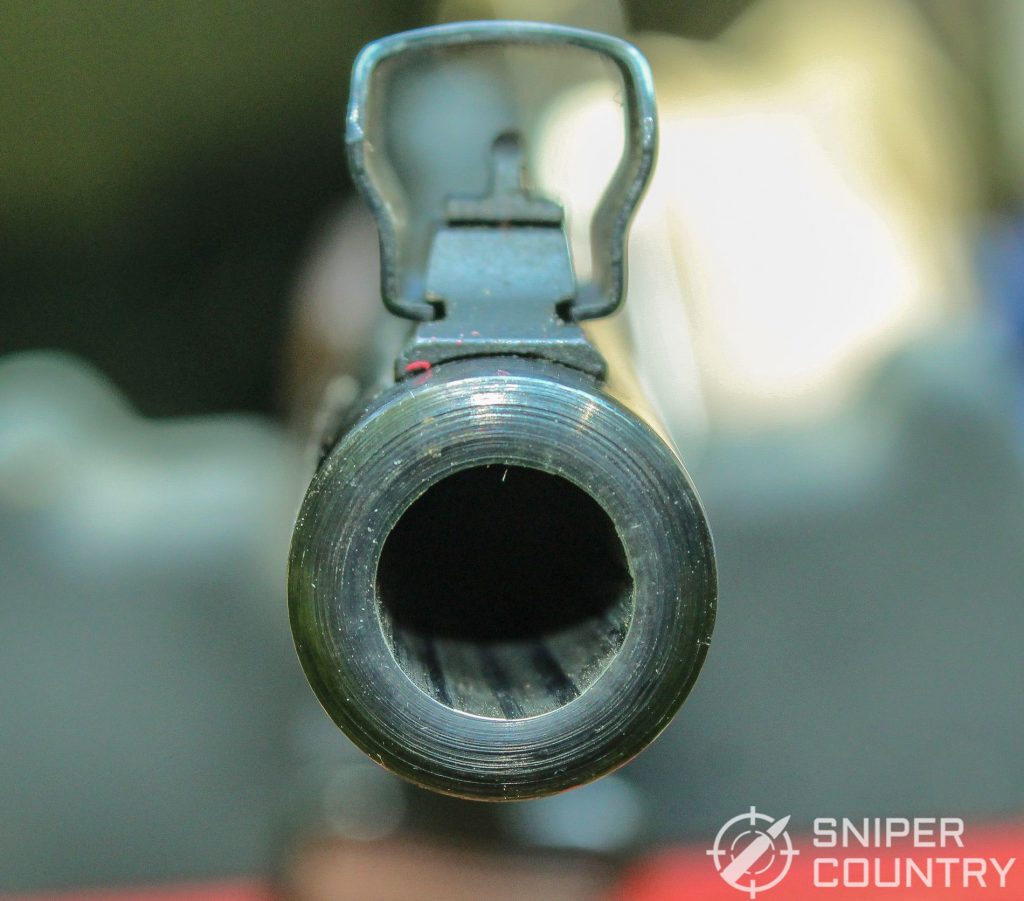
The muzzle. That’s one BIG hole!
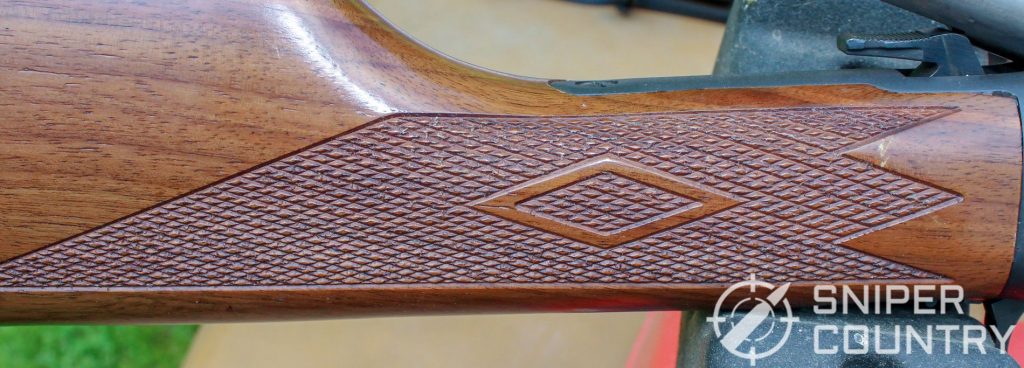
Speaking of things that could be improved, here’s the checkering on the grip. This is pressed, not cut. I know – cut checkering takes time and money. You could laser-etch it, as another option – anything to rough it up a bit more. This gun needs all hands on deck when it goes off, to be sure, and good checkering helps.
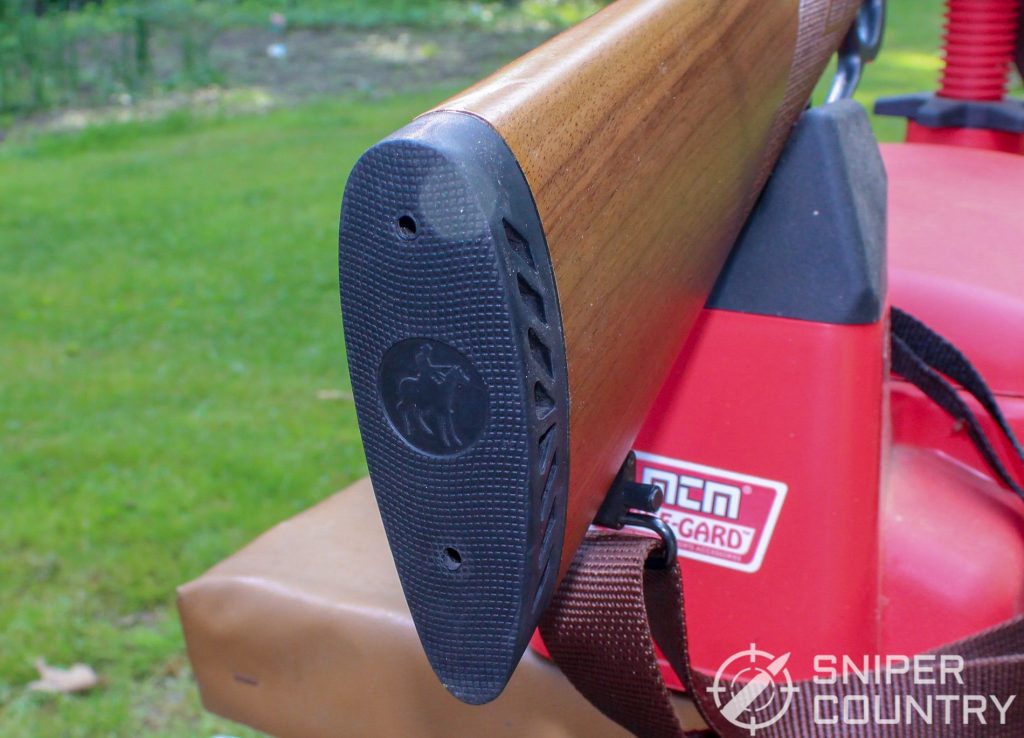
Marlin’s logo buttpad. It did help ease the *whack* my shoulder felt when I pulled the trigger.
Maintenance
OK… how do you clean this thing? The easy way to open the action and spray a good aerosol or pump solvent into the barrel. Then use a bore snake from the breech end to pull through the barrel. If you are old-school and only have cleaning rods, go from the muzzle but be careful. We all know somebody who knew someone else who damaged their muzzle crown with a cheap cleaning rod. Go slow and be careful.
Alternatively, you can remove the lever’s screw and pull the lever with locking lugs out of the action and then clean from the breech. This is a bit more involved method, one that you might want to see done first if you haven’t done it yourself.
It’s not hard, but you need to know what you’re doing. Here’s a decent video that shows how to clean a Marlin 336, which applies to the 1895.
Accessories
So you walked out of your gun shop with the Marlin 1895. What else should you add to it to make it more effective?
The most obvious item, at least in the photo above, is a scope. The Marlin side ejection system makes scope mounting easy. Plus the Marlin lever guns come drilled and tapped for a scope base or mounts.
As I explained above, I took the scope off before I shot it since it wasn’t sighted in. You might want to consider a scope for yours – you will add many yards to your effective shooting distance.
Why did I say scope and not a red dot? Well, for the Marlin 1895 .45-70 a scope is more appropriate. The right scope will be built so that the prodigious recoil the .45-70 generates will not hurt it. There are red dots out there that would withstand the 38+ pounds of recoil energy that the .45-70 generates. But I would take my chances with a heavy-duty scope. Here’s a decent Vortex scope that would work with, and is recommended for a .45-70.
Another accessory visible is the sling. A good sling can make or break your experience shooting your Marlin. Slings don’t need to be fancy or made of grade-triple-A leather to help. A stiff-ish sling will allow you to carry it, or to use as a shooting sling in an emergency. Here’s a decent Montana Gun Sling that looks like it ought to fill the bill nicely and won’t break the bank.
The last thing I’ll mention is a hammer extension. What? Doesn’t the hammer have a spur? Sure, but what if you mount a scope? How do you reach that spur? Most lever guns come with a side-mount hammer extension but what if you lose yours? Here’s one from Uncle Mike’s that should work well. Trust me, once you stick it on the hammer is secure.
Do You Need One?
At this point, I can almost hear you thinking ”all this sounds really good, but do I really need a .45-70?”.
Only you can answer that question. But remember – if you are a hunter of larger game such as deer, elk or caribou, the old warhorse .45-70 has a lot to recommend it.
A 405-grain bullet at 1400 f.p.s. with almost 1800 ft. pounds of energy garners attention on both ends of the gun.
You can buy down-loaded ammo if you are recoil-sensitive. I am discovering that I am becoming that way the older I get. I shot this .45-70 exactly four times earlier today and my eyeballs have only stopped bouncing.
One piece of advice I’ll offer is when you set up to shoot the rifle, pull the stock in as tight as you can to your shoulder. Do not use a relaxed grip! Your molars will thank you, as they will stay where they belong when you shoot.
Hand-loading makes a difference, as well. If you can reload this cartridge, you can custom-tailor your level of recoil. Load it down, with a 350-grain cast lead bullet, to about 1100 – 1200 f.p.s. for a load that you could shoot all afternoon at the range.
When late summer rolls around and it’s time to get in some practice for the upcoming deer/elk/whatever season… load it up to fire-breather proportions if you like.
The final answer to ”do I need one” is if you want one, go for it – you’ll figure out the recoil and load situations.
Shooting the Marlin 1895 Guide Gun
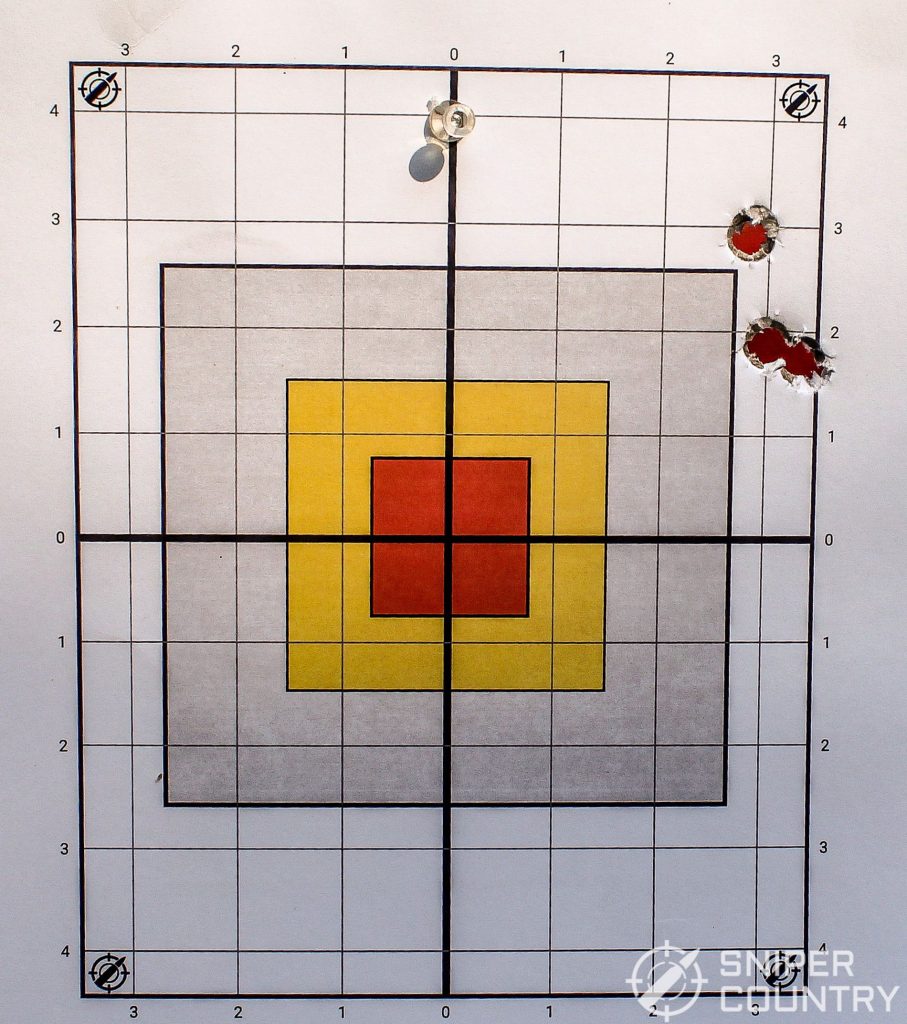
I set up a target right at 50 yards and proceeded to send 1,620 grains of hard-cast lead bullets downrange. That’s four 405-grain bullets. I had six I could shoot – this ammo shortage is something – but I accomplished what I wanted to do with these four “buffalo-load-equivalent” cartridges.
As you can see from the target, I have three holes. Somehow one of the first three shots went off the paper so I shot again. At any rate, the gun is way more accurate than I am and would suffice as a deer-stomper out past 100 yards – just adjust for the trajectory.
Remember the .45/70 accounted for thousands of buffalo in the 19th century so deer isn’t a problem.
If the gun were mine, the first thing I’d do is find reloading dies and a bullet mold. I’d then lay in a supply of handloads and proceed to center the group on the paper. At that point, I’d be good to go when hunting season comes around.
Not a bad target, for me. But… wow… that recoil! I am mostly a handgun shooter and don’t spend a lot of time at the rifle bench so I haven’t really gotten used to being belted like I was today. It sure got my attention!
There are many .45-70 rounds out there now, from Hornady’s LeveRevolution to boutique rounds. You will not have trouble finding what you need, once ammo starts its comeback.
If you are very recoil-sensitive, I’d recommend you steer clear of this cigar-sized round. But, if you have the need, go for it!
Are There Any Other .45-70 Lever Guns Out There?
Marlin has a good claim in this market but there is one other similar gun that I know about – the Henry .45-70. Henry builds a heck of a gun. We shot my .44 Magnum Big Boy yesterday and it impressed my sons – and is in direct competition with Marlin.
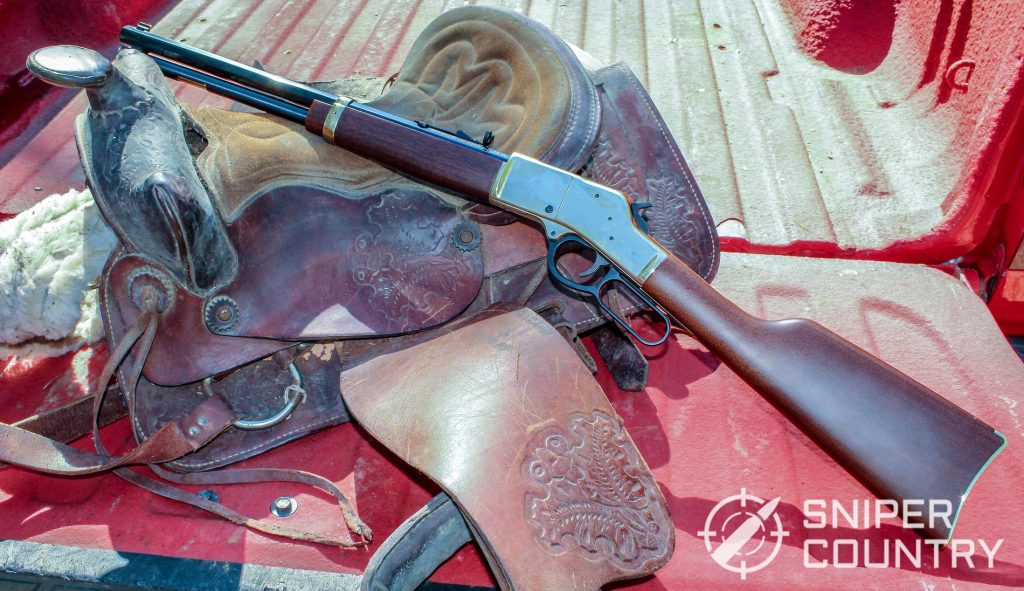
Featuring side loading and ejection and a large loop, the Henry is one great option. I like my Henry, but would be happy with this Marlin as well. The main difference that I see, at a glance, is that the Henry’s stock is made of a better grade of walnut and the blueing is a touch darker. These are subjective, of course, but if pressed that’s what I would mention.
Is the Marlin a viable option? Sure. Plus, you might be able to save a few bucks when you buy it. You could pick up this Marlin for a bit less than the Henry, when you can find it in stores or online. You could do worse than adding this to your collection. It’s a very nice example of a .45-70 lever gun that is accurate and reliable.
Other Reading
Here are a few reviews I’ve done of lever-action rifles:
Conclusion
If you are in the market for a .45-70 lever rifle, give the Marlin a hard look. Marlin is back, a very good thing. With Ruger at the helm, their rifles will be solidly-built and will last. I would like to have a Marlin 336 in .30-30, the .45-70 is a bit of overkill for the game animals we have around here. Those of you who own one know what I’m talking about.
Ruger will start with the 336s and 1895s then go from there, from what I’ve heard. Hopefully they’ll get around to building the 39 .22LR rifle soon, as well – those are great guns.
Don’t be afraid to belly up to the bar, slap your money down and walk out with the slickest shoulder-thumper I’ve seen in a while – the Marlin 1895 Guide Gun.
If you own one of these dinosaur-downers, let’s hear from you below. As always, keep ’em in the black and stay safe!

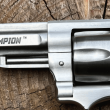



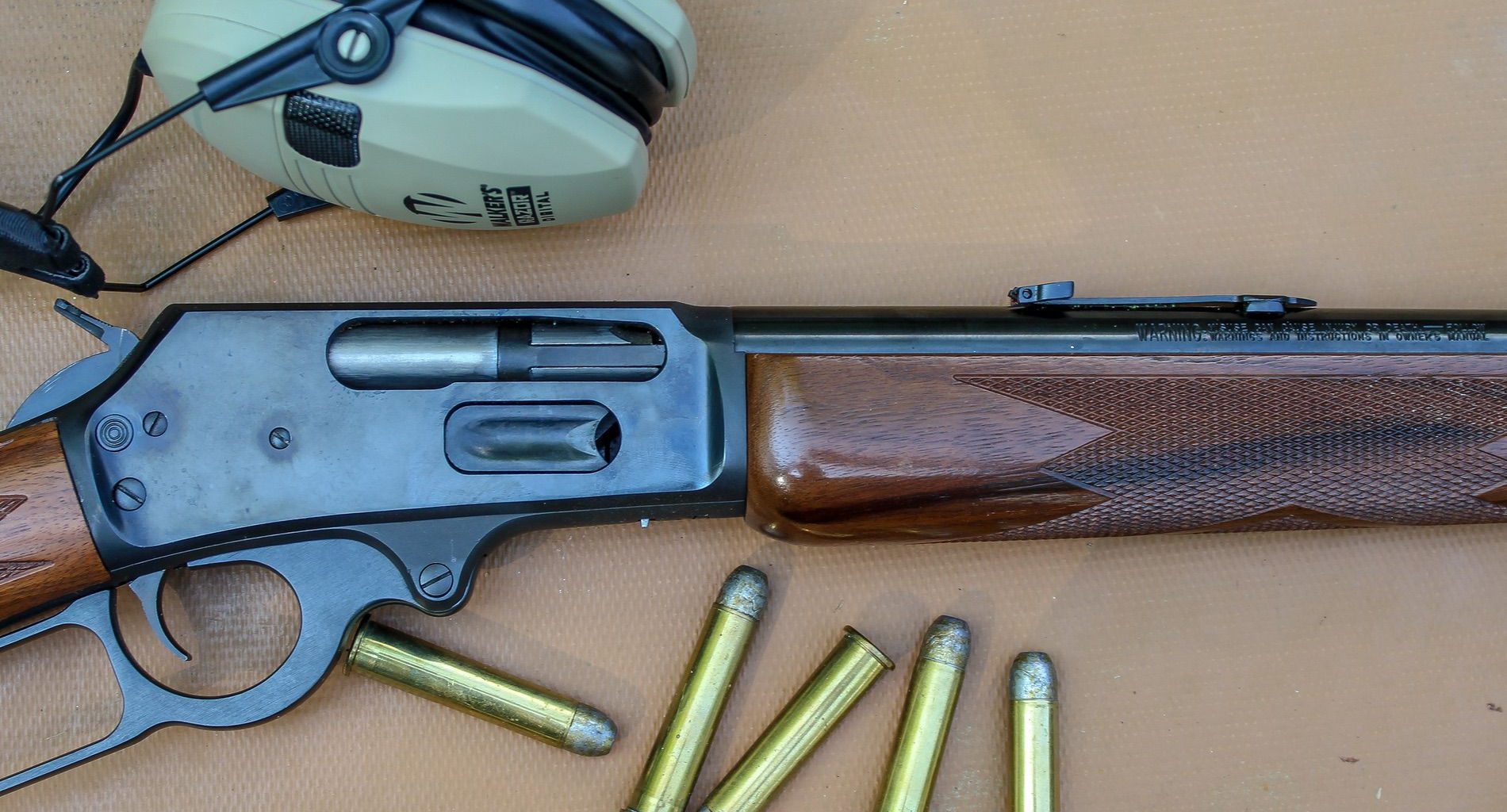
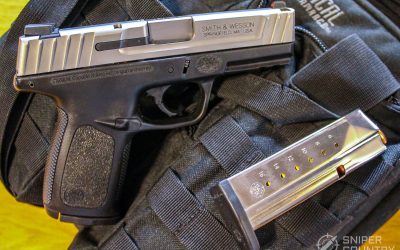

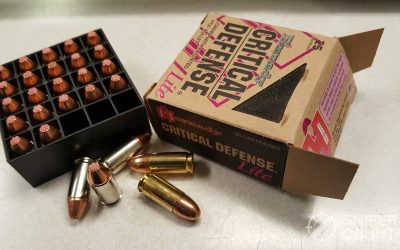
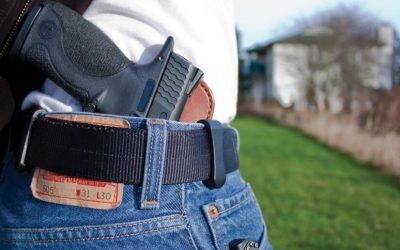
![9mm Glock Models [Ultimate Guide]](https://www.snipercountry.com/wp-content/uploads/2018/10/Glock-17-vs-Glock-19-vs-Glock-26-vs-Glock-41-vs-Glock-43-WM-400x250.jpg)
![Handgun Caliber Chart [2025 Ultimate Guide]](https://www.snipercountry.com/wp-content/uploads/2018/10/Handgun-Caliber-Comparison-400x250.jpg)
![Rifle Calibers [Ultimate Guide]](https://www.snipercountry.com/wp-content/uploads/2018/12/Header-1900-400x250.jpg)

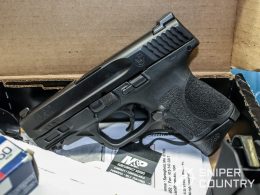
![Ruger American Pistol Review – One Nice .45 [hands on]](https://www.snipercountry.com/wp-content/uploads/2021/02/title-260x195.jpg)
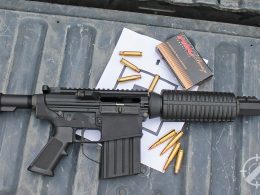
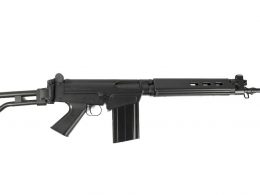

Mike– I have a 45-70 Guide Gun with the extended magazine and semi big loop lever. It also has the pistol grip. It holds 6 rounds and 1 in the chamber for 7 on board. I did not like the two piece factory trigger so had it replaced with a Wild West Guns one piece happy trigger. There is no take up and the trigger breaks at 4lbs like broken glass. The factory trigger was very gritty and would break at a mushy 6.5lbs. to 7lbs. There is no guess on the trigger now. It is always an even 4lbs. and then the break. I tried a Burris Fast Fire II red dot on it but due to Lasix surgery for vision correction on both eyes the dot became a big star so I went back to iron sights. Since range is limited with this rifle irons are just fine. To tell you the truth a scope just doesn’t look right on this type of rifle. It takes away from its clean profile. Just my opinion. Since I spend time in bear country my hand loads are not sedate. My Speer 400 gr. JFP crono at 1844fps. My Sierra Pro Hunter 300 gr. JHP crono at 2122 fps. My Cast Performance WNFPGS 405 gr. crono at 1741fps. Needless to say when something with well over 4000 foot lbs of energy hits something it stays down. Since I shoot a number of big thumpers, recoil doesn’t bother me much and the Marlin has a good recoil pad. That’s my 2 cents worth. I enjoyed your review Mike. Have a good day.
Bill, looks like you’ve got it figured out where the Guide Gun is concerned. Those upgrades all make sense, and I’ll bet those plus your excellent handloads equals really good accuracy. Thanks for writing, and stay safe in the woods!
Great review Mike. I too, have a fondness for the old ever Action rifles and carbines being the proud possessor of a early 50’s Win Model 1894. They represent one of the pinnacles of American Firearms ingenuity. Also the combination of deep blued steel and figured American Walnut is a master piece of beauty, that has few peers, whether Henry, Winchester or Marlin.
I’ve never had opportunity to fire the 45-70 Gov. Cartridge. I suspect being smack dab in the middle of Elk country is why I don’t recall anyone using the cartridge. My days of hunting have ended as joint disease makes firing anything with heavy recoil a painful experience. Even a half dozen rounds of 30-30 is about all I can take (thank God for the 5.56).
The brief history of Marlin is interesting. At one point I debated purchasing a Marlin in .357 Mag, as I think it goes hand in hand with carrying a revolver to have both chambered in the same caliber. Obviously, the old cowpokes felt that way too.
Thanks again for a great read.
Bemused, good to hear from you again! Too bad about the recoil, but I don’t think the .45-70 would be a wise choice in that department… wow! Granted, I’m mostly a handgun guy but the Marlin sure kicked. I appreciate your experiences – thanks for writing again!
I have one with the 22″ barrel only because it’s a big slow moving cartridge. I put hi-vis sights and a big loop on mine along with a trigger job that has turned it into my favorite ” walk in the woods” gun. I’m in a northern climate with large hands and the factory loop was just too small for me. I also have quite a few bear around so this and my 10mm seem like a good match even when deer hunting! I run Barnes 300gn.TTSX bullets over AA 4570 powder. I haven’t bothered to chrono. the loads. but they’re accurate and have accounted for quite a few deer!
Paul, sounds like a good combination. I could see your .45-70 taking out deer with room to spare. Sounds like you have it figured out – this rifle on your shoulder and a 10mm on your hip. Thanks for writing!
Mike– When I gave the ft lbs of energy for my 45-70 Guide Gun at 4000 ft lbs of energy I misspoke. It is more in the 3000 plus energy range. The 4000 ft lbs of energy are for my Harrington and Richards 1871 model Buffalo Classic 45-70 which has a 29 inch barrel. It is zeroed at 200 yards so you can hold dead on out to 250 yards without adjusting the ladder sight. I apologize for the incorrect data.
Bill, no problem – even at 3000 ft./lbs., the energy levels are extreme… I’m used to puny handgun rounds producing around 400 ft/lbs — 3K sounds huge! That should allow you to take any game animal on the continent, eh? Better your shoulder than mine! Thanks for writing again.
I have a Marlin .45-70 just like this one. For looks I would have preferred a model with an octagon barrel, and a longer barrel for a little more velocity. But, this is what was available when I bought a few years ago. I figure that it makes a decent anti-vehicle weapon given the heavy bullet and good velocity.
Mitch, good point. If it will stop a Buffalo, it should stop an auto. I agree, a longer barrel would be nice but for a guide gun, the shorter one works. Thanks for writing!